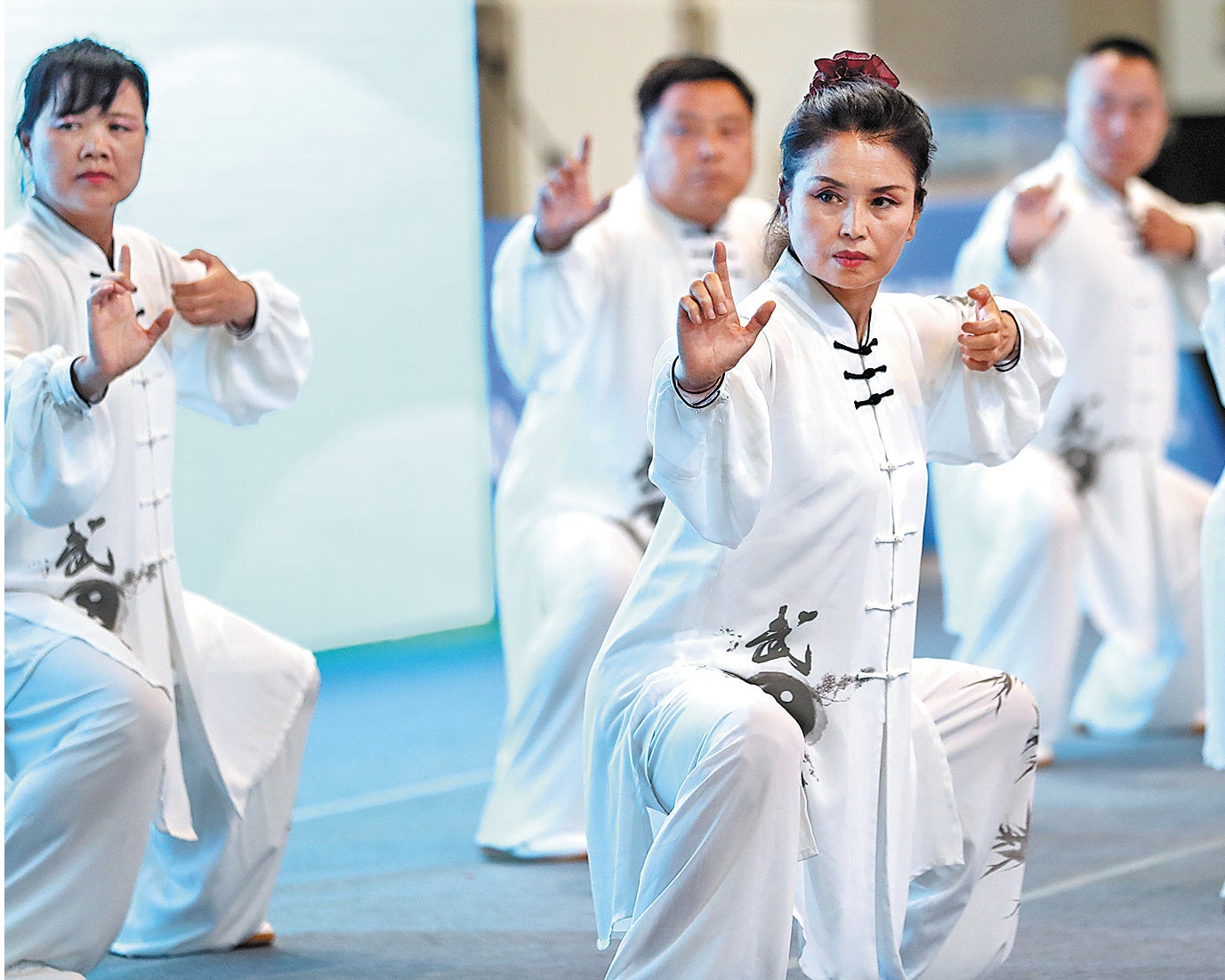Traditional exercise finds fresh audience
THE ARTICLES ON THESE PAGES ARE PRODUCED BY CHINA DAILY, WHICH TAKES SOLE RESPONSIBILITY FOR THE CONTENTS

For 28-year-old model Huang Qian, going to the gym and following a strict diet help her maintain a slim figure. About eight months ago, she decided to add baduanjin, a new form of exercise to her daily routine.
Baduanjin, which translates as “eight pieces of brocade”, is a form of qigong, a set of traditional Chinese fitness exercises combining physical movement with breathing and meditation.
“I knew nothing about baduanjin until I saw videos of people practising it on social media. The movements are very slow, like tai chi, so I naturally associated it with the kind of exercise favoured by the elderly,” said Huang, who is from Hubei province.
Nevertheless, she decided to give baduanjin a try because she has issues with her cervical vertebrae, spleen and stomach.
“I read reviews, saying that it can be helpful for these kinds of problems,” she said.
The practice doesn’t require much space or time. Baduanjin uses breathing and concentration techniques to improve the state of the body and mind through eight, well-designed sequences. Huang usually practises about half an hour after breakfast. She enjoys the exercise which stretches and relaxes her whole body.
“I feel my body slowing down, as well as my mind. I concentrate on my movements while listening to beautiful, soothing music. It only takes me 12 minutes to finish the eight sequences. I feel refreshed and full of energy before starting my day.”
When she found out that one of her favourite fitness influencers, German Pamela Reif, had added baduanjin to her workout videos, Huang was surprised and excited.
The nearly two-minute video has received more than 900,000 views, 49,000 likes and 24,000 reposts in three weeks since it was posted on Bilibili, a popular video sharing platform, on 8 August. Film stars and fitness influencers who do baduanjin have also shared videos online, which has attracted many new practitioners.
Li Jianlin, 28, works as a fitness content creator for Keep, a popular app for sports lovers in China. He has created baduanjin-based exercise programmes for the platform’s users. Available in three different levels, the programmes have received warm feedback from users.
“Seventy per cent are young people, under the age of 30. The programmes give detailed instructions and demonstrate the movements from different angles,” he said.
According to Wang Zhen, a professor at the Shanghai University of Sport, who teaches in its traditional Chinese sports programme, baduanjin dates back to the Song Dynasty (960-1279).
Compared with other types of qigong exercise, such as tai chi and wuqinxi (in which practitioners imitate the movements of animals), baduanjin is more suited to beginners thanks to its simple, gentle movements.
“Each movement has its own set of rhyming instructions, which allows practitioners to memorise them easily, and move in time,” Wang said.
“You can practise at almost any time and anywhere. For example, you can practise a standing posture by your desk after sitting in front of the computer for a long time,” he said.
Subscribe to Independent Premium to bookmark this article
Want to bookmark your favourite articles and stories to read or reference later? Start your Independent Premium subscription today.